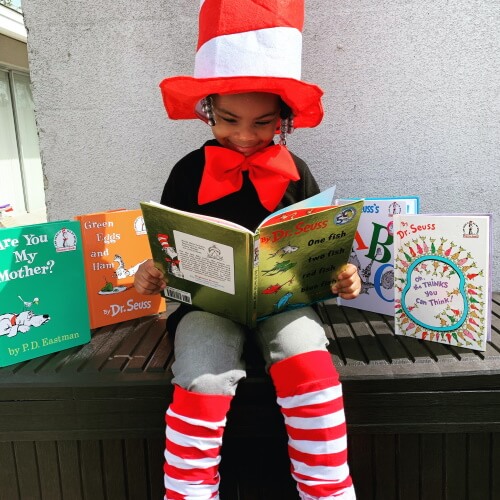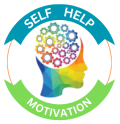Knowing how to teach visualization in reading can have a long-term positive effect on your students.
It has been said that if you can read, you can change your life.
Table of Contents

Hi. Ian here and welcome to this article!
Today, we’re going to talk about how to teach visualization in reading.
Visualization is a powerful reading strategy that can help kids better understand and remember what they’re reading. It’s also a lot of fun!
What is visualization?
Visualization is the process of creating a mental image of what you’re reading. When you visualize, you’re using your imagination to bring the words to life. You can visualize the setting, the characters, and the events of the story. You can even visualize the emotions that the characters are feeling.
Why is visualization important for reading?
Visualization is important for reading because it helps kids to:
- Better understand the text: When kids visualize what they’re reading, they’re more likely to understand the meaning of the text.
- Remember the text better: Visual images stick in our minds better than words, so kids are more likely to remember what they’ve read if they visualize it.
- Make inferences and predictions: Visualization can help kids make inferences about what will happen next in the story.
- Enjoy reading more: When kids are visualizing, they’re more engaged in the story and they’re more likely to enjoy reading.
How to teach visualization in reading
There are many different ways to teach visualization in reading. Here are a few tips:
- Model visualization for your students. When you’re reading aloud to your students, pause periodically and share what you’re visualizing. For example, you might say, “I’m picturing a dark and gloomy forest.”
- Ask your students to visualize. As you’re reading together, ask your students to visualize what they’re hearing. You might say, “What do you see when you hear the words ‘dark and gloomy forest’?”
- Use graphic organizers. Graphic organizers can help kids to visualize the text. For example, you might use a Venn diagram to compare and contrast two characters or a timeline to map out the events of the story.
- Provide opportunities for students to draw or sketch. Drawing or sketching can help kids to visualize what they’re reading. You might ask them to draw a picture of their favorite character or setting or to sketch out the events of a story.
Here are a few additional tips for teaching visualization in reading:
Choose appropriate texts. Not all texts are created equal when it comes to visualization. Some texts are more descriptive than others. When you’re choosing texts for your students, select texts that are rich in sensory details.
- Make it fun! Visualization should be enjoyable for kids. If they’re not having fun, they’re less likely to stick with it. Make sure to choose activities and games that are engaging and interactive.
- Be patient. It takes time for kids to learn to visualize effectively. Don’t get discouraged if they don’t get it right away. Just keep practicing and providing them with opportunities to visualize.
Visualization is a powerful reading strategy that can help kids better understand and remember what they’re reading. It’s also a lot of fun! By following the tips above, you can teach your students to visualize effectively.
Resources
- International Literacy Association: https://www.comprehensiveliteracy.com/index.html
- National Education Association: https://www.nea.org/
- Reading Rockets: https://www.readingrockets.org/
I hope this article will be helpful!
Visualization is a powerful reading strategy that can help students better understand and remember what they read. When students visualize, they create mental images of the characters, setting, and events in a story. This helps them to connect with the story on a deeper level and to make inferences about what is happening.
There are many ways to teach visualization to students. One way is to start by modeling the process yourself. As you read aloud to your students, stop occasionally to describe what you are visualizing. Point out the details in the text that are helping you to create your mental images.
You can also help students to visualize by using graphic organizers. Graphic organizers are visual representations of information. They can be used to help students to organize and understand the information in a text. There are many different types of graphic organizers, so you can choose one that is appropriate for the text you are reading.
By teaching visualization to your students, you can help them to become better readers. Visualization can help them to understand and remember what they read, and it can also help them to connect with the stories they read on a deeper level.
This may be true, especially if you are able to visualize the concepts and ideas that you are reading about. Visualization is a skill that can be taught, and it can help students better understand and remember what they are reading.
There are several techniques that teachers can use to help students learn to visualize while reading. In this article, we will discuss some of the ways that this can be achieved.
What is visualizing in reading?
- Reading passages to teach visualization
- Visualizing reading strategy
- Visualizing reading strategy example
- Visualization activity for students
- Visualizing in reading activities
- Can Visualization Be Taught?
What Is Visualizing In Reading?
Visualizing is a technique that can help you better understand and remember what you read. You can make the material come to life by picturing the information in your head. This can be especially helpful when studying for exams or trying to learn new material.
When you visualize in reading, you create a mental image of the words as you read them. This helps your brain to process and remember information more effectively.
Studies have shown that people who use visualization while reading perform better on comprehension tests and recall tests than those who do not use visualization. In addition, visualization can help to improve reading speed and accuracy.
So how can you enable your students to start using visualization while reading? It’s simple! Just ask them to take a moment to visualize the words on the page as they read them. See the images in their mind, and feel the emotions that go along with them. By doing this, they will be able to get more out of their reading experience!

Reading Passages To Teach Visualization
When we’re working on achieving a goal, visualization can be a powerful tool. We can use it to help us see ourselves accomplishing our goal and to create a clear picture in our mind of what that looks like. There are lots of different ways to use visualization, and one great way to do it is by reading passages that teach visualization.
Visualizing Reading Strategy
One of your shared goals might be to encourage your children, or students to read more books. But how can you make sure that they stick to this goal and actually read more this year? One way is help them to visualize their reading strategy. By visualizing the process of reading and taking small steps, they can make reading a habit that will last throughout the year.
Visualizing Reading Strategy Example
Check out the previous visualization strategy example to see how it could work for you as a parent or teacher. This approach is based on the idea that seeing information helps us remember it better. By creating a mental picture of what we are reading, we can boost our comprehension and retain more of the information. Try it out and see how well it works for you!

Visualization Activity For Students
Most people know about the power of visualization, but what many don’t know is that you can use this technique for students as well. Visualization activities can help with focus, memory retention, and overall learning. In addition, they are a great way to promote creativity and relaxation. Here are some visualization exercises that students can try:
Have them picture themselves achieving their goal. When they imagine themselves achieving their goal, they must incorporate all of their senses. They should see it, feel it, smell it, hear it, and taste it if possible. This will create a more powerful experience for them and will make the visualization more real.
- Ask them to picture themselves in a calm and peaceful place – such as on a beach or in nature
- Have them imagine themselves completing the task at hand successfully
- Ask them to picture themselves succeeding in everything they do
- Have them picture themselves walking into the classroom, sitting down at their desk, and opening their notebook
- Ask them to picture themselves feeling proud of their accomplishments
- Have them create a positive visualization of themselves – Ask them to imagine that they have all the qualities they would like to have and see themselves living a happy and successful life
- Ask them to see themselves completing assignments and exams with ease. Have them imagine themselves getting the grades they want and graduating from school with honors
- Have them picture themselves doing the things they love, surrounded by the people they care about most. Seeing themselves being successful and fulfilled in their chosen career path.
Visualizing In Reading Activities
It has been shown that there are benefits to be gained from visualizing while engaging in any activity. This is especially true when it comes to activities such as reading. When your child or student visualizes the scenes and characters that they are reading about, their mind is able to create a more vivid image which can lead to a deeper understanding of the material.
Additionally, visualization can help to improve their focus and keep them engaged with the reading material. By incorporating visualization into their reading routine, they can get far more out of their reading activities.
Can Visualization Be Taught?
Visualization is a skill that can be learned and improved, according to a study published in the journal Thinking Skills and Creativity. The study found that teaching people how to visualize better resulted in improved performance on creativity tasks. Researchers say that this suggests that visualization abilities are trainable and not innate.
So, if you’re looking to improve your student’s creative skills, focus on improving their visualization ability. There are plenty of ways to do this – just experiment until you find what works best for them. Keep in mind that it takes practice to get good at visualization, so don’t be discouraged if they don’t see results right away. With time and effort, they can definitely improve their ability to visualize effectively.

How Do You Teach A Child To Visualize?
It’s said that children are sponges, soaking up information and experiences like no other. As parents and teachers, we want to give our children every opportunity for success in life. So what can we do to help them learn and grow? According to some experts, teaching children how to visualize may be one of the most important things we can do.
Here’s why visualizing is so important, and how you can start teaching your child today.
The most crucial thing when teaching a child how to visualize is that they’re having fun. This will make it easier for them to memorise what they’ve seen.
As an adult, it can be easy to forget how we learned certain things. We may not remember specifically how we were taught to do something or to think about something a certain way, but we know what works for us and what doesn’t.
This is especially true when learning new skills or changing our thinking patterns. And when it comes to teaching visualization techniques to children, the most important thing is that adults take the time to find out what works best for each child.
There is no one “right” way to teach visualization; what works for one child might not work for another. Adults need to be adaptable and patient to help children learn this essential skill.

FAQS
How do you introduce visualization?
One way is to describe visualization as creating a picture or movie in our minds.
Why is Visualisation important for kids?
Being able to visualize is a skill young readers build over time. The more children read the more they will be able to imagine and understand.
What does visualizing involve as a reading strategy?
Visualizing as you read can help to improve your critical comprehension of a text. Visualizing is seeing an essay, short story, or play come to life in your “mind’s eye.”
Final Words
Visualization is a powerful reading strategy that can help students better understand and remember what they read. By creating mental images of the characters, setting, and events in a story, students can connect with the text on a deeper level and make inferences about what is happening.
There are many different ways to teach visualization to students. One way is to model the strategy yourself. When you are reading aloud to your class, stop periodically to describe what you are visualizing. Point out the details in the text that are helping you to create your mental images. You can also use graphic organizers to help students visualize the text.
For example, you could create a T-chart with the headings “What I See” and “What I Hear” and have students fill in the chart as you read aloud.
Another way to teach visualization is to have students create their mental images. You could give them a simple object to draw, such as a flower, and then have them describe what they see in their mind. You could also have them read a description of a setting or character and then draw a picture of what they are visualizing.
Visualization is a valuable reading strategy that can help students improve their comprehension and retention. By taking the time to teach visualization to your students, you can help them become better readers.
Reading passages to teach visualization is a powerful strategy that can improve comprehension skills. The visualizing reading strategy example we’ve provided should give you some insight into how this works in the classroom and why it’s so effective for children and students of all ages.
The power of visualization in reading is immense and can be used by educators to help students learn how to visualize while they read. Whether you’re working with a student who struggles or just wants an added challenge, we hope that the strategies we’ve shared in this article give the reader new insight into what it means when people say “Imagine that.”
Wishing you health, Wealth, and Happiness
